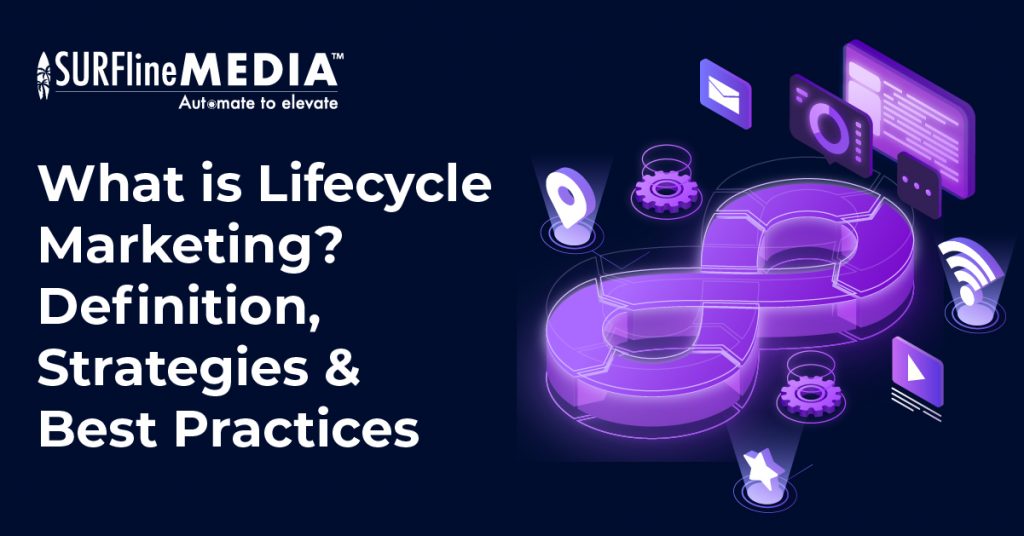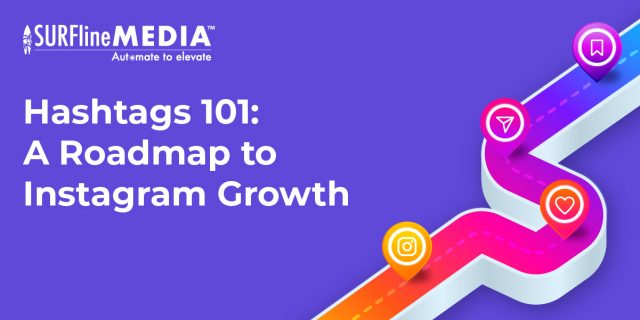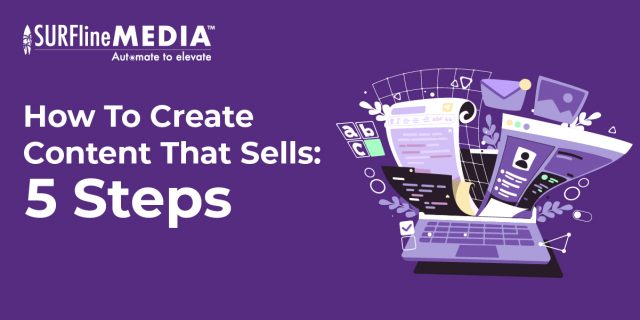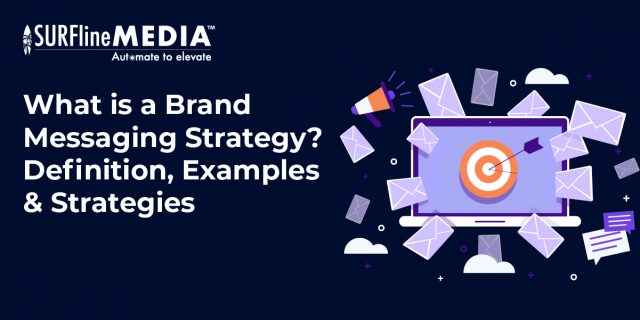

- August 9, 2023
- 4:00 pm
- No Comments
What is Lifecycle Marketing? Definition, Strategies & Best Practices
The customer journey is a multi-layered process, with customers having different needs and expectations at each stage. This is why a lifecycle marketing strategy definitely matters. In this article, we’ll explore the different stages of the customer journey and how you can use lifecycle marketing to reach your customers at the right time with the right content.
What is Lifecycle Marketing?
Lifecycle marketing is a communication strategy that uses multiple touch points to reach customers at different stages of their journey. Businesses use this strategy to attract, engage, and retain customers throughout the entire customer lifecycle, from first contact to long-term loyalty. This strategic approach is also known as customer lifecycle marketing or customer journey marketing.
Unlike full-funnel marketing which primarily focuses on turning visitors to leads and then turning leads into customers, lifecycle marketing is centered around building relationships with clients and creating repeat customers.
Both full-funnel and lifecycle campaigns will undoubtedly help businesses generate venue and growth opportunities. Ultimately, the most effective marketing strategy will vary from one business to another based on industry, business’ goals and available resources.
The Difference Stages of Customer Lifecycle and Strategies
Lifecycle marketing has evolved to adapt to the changing landscape of consumer behavior and the advancements in technology and data analytics. The modern lifecycle stages build upon the traditional lifecycle model and take into account the importance of personalized and data-driven marketing strategies.
Here are 8 stages of lifecycle marketing:
Awareness
The awareness stage marks the beginning of the customer journey map, where potential customers become aware of your brand, product, or service for the first time.
-> Strategy: To effectively build awareness, employ various marketing channels such as content marketing, social media advertising, influencer partnerships, and search engine optimization (SEO). Create engaging and visually appealing content to capture attention and generate interest in your offerings.
Interest
During the interest stage, potential customers have shown some curiosity and engagement with your brand or content, indicating a deeper level of interest.
-> Strategy: Nurture leads with valuable content, webinars, and lead magnets that address their pain points and provide solutions. Utilize email marketing and retargeting ads to maintain top-of-mind awareness and further engage interested prospects.
Engagement
The engagement stage involves actively involving potential customers with your brand and encouraging interaction and participation.
-> Strategy: Take advantage of email automation. Personalize interactions through email segmentation, behavior-triggered campaigns, and interactive content. Use social media engagement, surveys, and contests to foster a sense of community and active participation.
Consideration
The engagement stage involves actively involving potential customers with your brand and encouraging interaction and participation.
-> Strategy: Personalize interactions through email segmentation, behavior-triggered campaigns, and interactive content. Use social media engagement, surveys, and contests to foster a sense of community and active participation.
Conversion
The engagement stage involves actively involving potential customers with your brand and encouraging interaction and participation.
-> Strategy: Personalize interactions through email segmentation, behavior-triggered campaigns, and interactive content. Use social media engagement, surveys, and contests to foster a sense of community and active participation.
Post-purchase Experience
After making a purchase, customers enter the post-purchase experience stage, where their initial interactions with your brand leave a lasting impression.
-> Strategy: Ensure a smooth and positive onboarding experience. Send personalized thank-you messages, offer product guides, and provide proactive customer support. Request feedback to show that their opinions and satisfaction are valued.
Retention
After making a purchase, customers enter the post-purchase experience stage, where their initial interactions with your brand leave a lasting impression.
-> Strategy: Ensure a smooth and positive onboarding experience. Send personalized thank-you messages, offer product guides, and provide proactive customer support. Request feedback to show that their opinions and satisfaction are valued.
Loyalty
In the loyalty stage, customers become devoted advocates of your brand, actively promoting and referring others to your business.
-> Strategy: Convert loyal customers into brand advocates by encouraging user-generated content and testimonials. Run referral programs to incentivize customers to bring in new business. Engage with loyal customers on social media and publicly celebrate their loyalty.
While you can easily spot different labels on each stage of lifecycle marketing, the nature of the entire customer journey and lifecycle marketing remain unchanged. Apart from that, what works for one customer may not work for another.
In other words, customers may move back and forth between stages, and they may not always follow the same path. It is important to be flexible and adaptable in your marketing strategy, and to be prepared to meet customers where they are in their journey.
The Benefits of Lifecycle Marketing
- Increased customer retention: Lifecycle marketing helps you to keep your customers engaged and coming back for more. This can lead to increased customer retention rates, which can save you money on acquisition costs.
- Increased sales: Lifecycle marketing can help you to increase sales by nurturing leads and converting them into paying customers. It can also help you to upsell and cross-sell to existing customers.
- Improved customer satisfaction: Lifecycle marketing can help you to improve customer satisfaction by providing a personalized and consistent customer experience. This can lead to positive word-of-mouth and increased brand loyalty.
- Better understanding of your customers: Lifecycle marketing can help you to better understand your customers by tracking their behavior and interactions with your brand. This information can be used to improve your marketing campaigns and create more effective content.
- Increased ROI: Lifecycle marketing can help you to increase your ROI by targeting your marketing efforts at the right customers at the right time. This can help you to save money on marketing costs and generate more leads and sales.
Best Practices for Lifecycle Marketing in 2023
Understand your customer journey
The first step to implementing lifecycle marketing is to understand your customer journey. This means understanding the different stages that customers go through as they interact with your brand, from awareness to purchase to loyalty.
Segment your customers
Once you understand your customer journey, you can segment your customers into different groups based on their stage in the journey. This will allow you to tailor your marketing messages to each group and reach them with the right content at the right time.
Personalize your marketing
Lifecycle marketing is all about personalization. You need to create content that is relevant to each customer group and that speaks to their needs and interests.
Use data to track and measure your results
It’s important to track your results so that you can see what’s working and what’s not. This will help you to optimize your marketing strategy and get the most out of your marketing efforts.
Use automation to scale your efforts
Lifecycle marketing can be a lot of work, but marketing automation can help you to scale your efforts and reach more customers. There are a number of different CRM automation tools available, so you can find one that fits your needs.
Additionally, you can get support from a CRM marketing automation service provider to speed up your process and save time.
Be consistent and persistent
Lifecycle marketing is a long-term strategy. It takes time to build relationships with customers and earn their trust. Be consistent with your marketing efforts and persistent in your outreach.
_______________________

Surfline Media – Automate to Elevate
Our website: https://surflinemedia.com/
Contact us: https://surflinemedia.com/contact-us/
Phone number: +1 323-741-4482
Email: info@surflinemedia.com






